Oslo is the capital of Norway. Oslo is also the most populous city, known for its citywide green spaces, museums, and historical landmarks.

Oslo beautifully harmonizes architectural expressions from different eras, with cutting-edge contemporary edifices standing shoulder to shoulder with historic buildings. The city boasts a dynamic cultural fabric replete with a diverse palette of music, art, and gastronomy, rendering it a beloved destination for both visitors and inhabitants.
Where is Oslo?
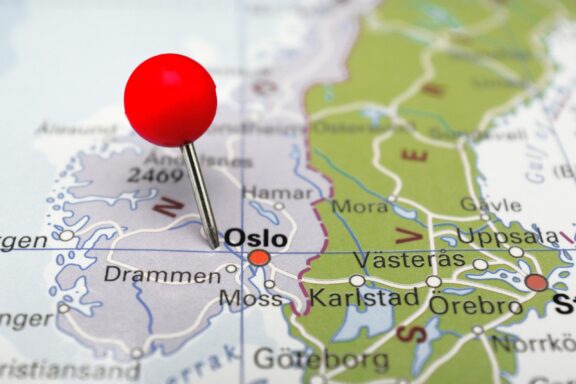
Oslo is located in southeastern Norway, nestled between the Oslofjord and the green hills of Oslomarka. The city is situated at the northernmost end of the Oslofjord, which provides access to the North Sea and the wider world. The coordinates for Oslo are approximately 59.9139 °N latitude, 10.7522 °E longitude.
Green hills and mountains surround Oslo and feature many parks and open spaces, offering plenty of opportunities for outdoor activities like hiking and skiing. It is also approximately halfway between Norway’s southern and northern borders, making it a central hub. Despite its northern latitude, its climate is relatively mild due to the warming effects of the Gulf Stream.
History of Oslo
Oslo was founded around 1000 AD, during the reign of King Harald III, also known as Harald Hardrada. Due to its strategic location, the city was likely a trading post during the early years. It was positioned at the head of the Oslofjord, which provided an excellent harbor for ships, and the Akerselva River, providing fresh water and a route inland.
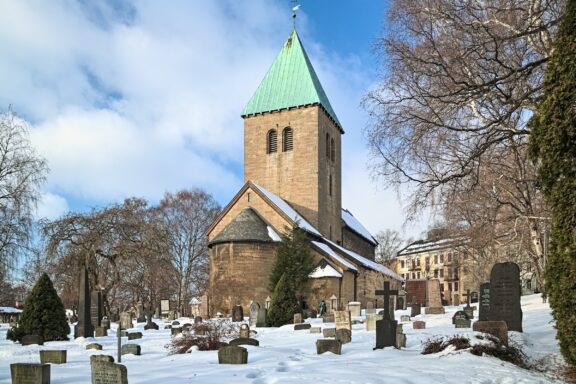
In the 12th century, under the rule of King Håkon V, Akershus Fortress was constructed, giving the city a major strategic and symbolic center. The fortress protected the town from potential invaders and underscored the city’s growing importance. Oslo gradually evolved into a regional power, becoming a bishop’s residence and, thus, a religious center.
The mid-14th century was a turbulent time for Oslo. The Black Death hit the city hard, which arrived in Norway in 1349. This devastating pandemic significantly reduced the population and affected the city’s development. Nevertheless, Oslo remained an important trade center, and its economy largely depended on the timber industry.
In 1352, Oslo got its city seal, featuring St. Hallvard, the city’s patron saint, which indicates that Oslo held a certain level of importance and self-identity during this period.
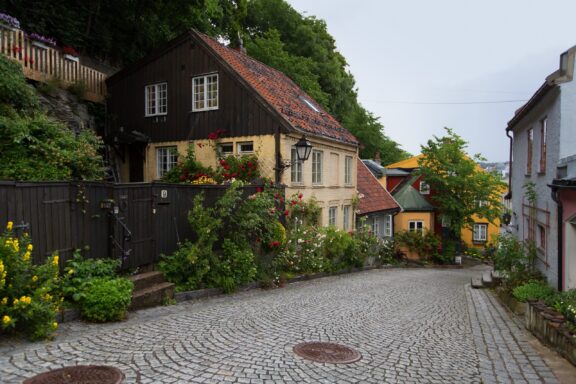
In the Early Modern Period, specifically in 1624, a large fire swept through Oslo, leaving much of the city in ruins. King Christian IV of Denmark-Norway ordered the city to be moved closer to Akershus Fortress, presumably to protect it from future fires and military threats. The new city was named Christiania, after the king himself.
Christiania was an important administrative and commercial center during this time, with Norway under Danish rule until 1814. Trade increased with the introduction of absolute monarchy in Denmark-Norway, bringing about a more efficient administration and abolishing the old feudal system. This period was also marked by increased construction, the development of wharves, and the city’s fortification.
The early 18th century saw Christiania heavily fortified with ramparts and bastions per the contemporary European style. However, another large fire in 1686 and the Great Northern War (1700-1721) brought significant destruction.
The Independence of Norway and Christiania as the Capital
Christiania began developing a distinct Norwegian identity in the late 18th century and early 19th century despite Norway still under Danish rule. This culminated in 1814 when Norway declared independence, albeit briefly, before entering into a union with Sweden. Christiania played a crucial role in these events and set the stage for its future status as a national capital.
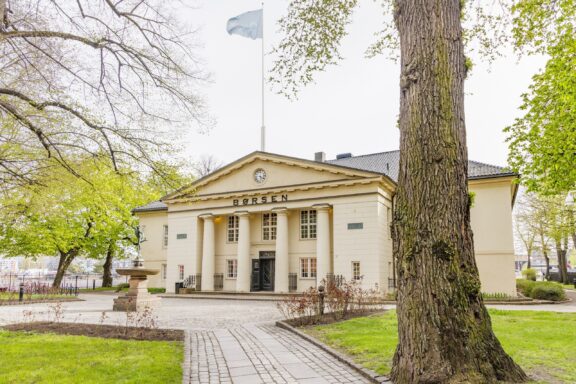
When Norway entered a union with Sweden in 1814, Christiania was the de facto capital, housing the King and Parliament. Despite not having an independent foreign policy, the period was marked by substantial growth and development for the city.
Norway declared independence from Sweden in 1905, and Christiania, now Oslo from 1925, continued as the capital of a fully independent Norway. The city saw continued growth and modernization, with infrastructure and public services advancements.
Like the rest of Norway, Oslo was occupied by Nazi Germany from 1940 to 1945 during World War II. The Royal Family and the government were forced to flee the city, leading the resistance from abroad and other parts of the country. The city was largely spared from destruction during the war.
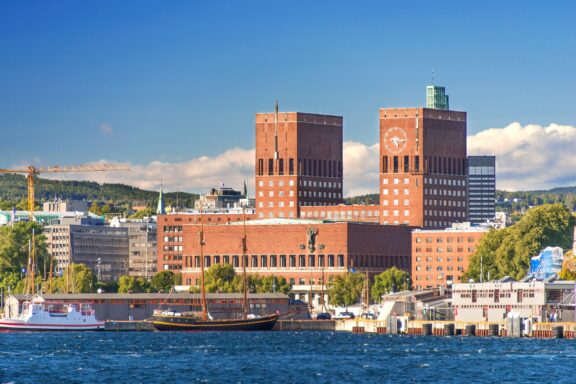
After the end of World War II, Oslo experienced a period of rebuilding and rapid growth. A baby boom, rural-to-urban migration, and increasing immigration increased the population. This resulted in extensive urban development and expansion, with many new residential areas being built.
As a cultural hub, Oslo houses many museums, galleries, music venues, and annual events. The annual Nobel Peace Prize ceremony in Oslo City Hall attracts global attention. It continues to be a bustling city with a rich past and a promising future.
Features of Oslo
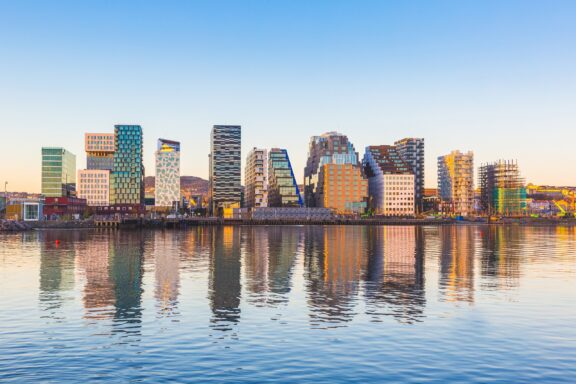
Oslo is a city teeming with unique features and notable aspects that captivate the hearts of its visitors and residents alike. One of the city’s most distinguishing features is its rich cultural scene and striking architectural landscape.
Oslo is also renowned for its commitment to environmental sustainability, often ranking high on global green city indexes. The city’s efficient public transportation system, well-planned bicycle routes, and many electric vehicles reflect this dedication.
In essence, Oslo’s allure lies in its unique ability to seamlessly blend history, culture, modernity, and love for nature, creating a harmonious urban experience in the heart of Norway.
Geography and Climate
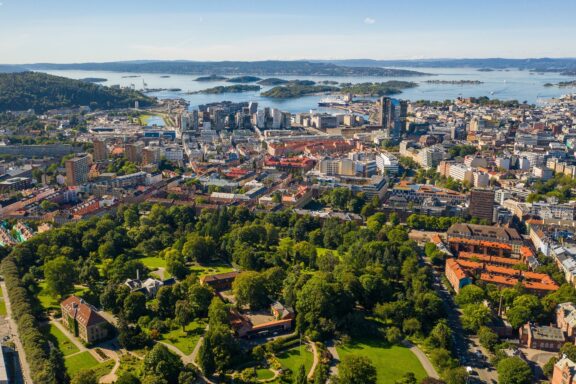
Green spaces, waterways, and urban development characterize Oslo. The city is divided by the Akerselva River, which flows from the north to the Oslofjord in the south. The city center is situated at the easternmost end of the fjord, providing easy sea access. The city’s terrain is varied, with hills and forests to the north and west and the flatter land of the fjord to the south and east.
The Oslo region has a humid continental climate characterized by warm summers and cold winters. However, the city’s proximity to the sea makes the climate somewhat tempered by marine influences.
Average temperatures range from about -4.3 °C (24.3 °F) in the coldest month, January, to around 17.2 °C (63 °F) in the warmest month, July. Precipitation is spread fairly evenly throughout the year, though the late summer months tend to be wetter. Snow is common in the winter months.
Population
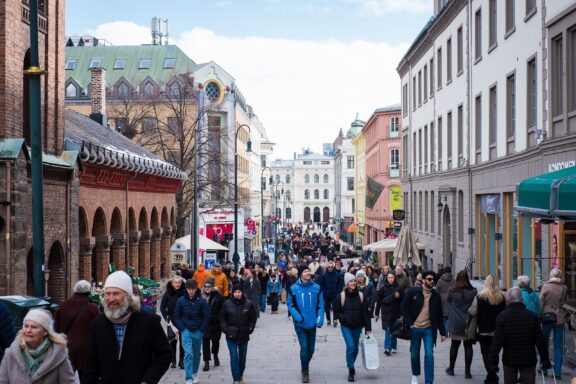
Oslo has a population of over 1 million people. The city is quite cosmopolitan and diverse, with people from various backgrounds and nationalities. Immigration has played a noteworthy role in the city’s population growth in recent decades, with a sizeable portion of the population being first or second-generation immigrants.
Norwegian is the official language, but due to the city’s diversity, a wide range of languages are spoken in Oslo, and English is widely understood. The city has a fairly young population compared to the rest of the country, largely due to the draw of educational opportunities and jobs.
Economy
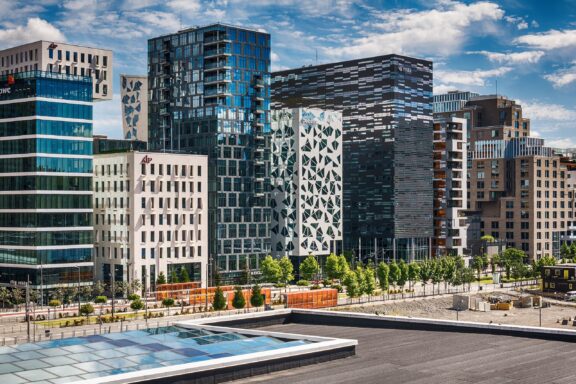
Oslo’s economy is diverse and robust. It is the economic hub of Norway and has a healthy labor market with low unemployment rates. The city is the national center for finance, with the Oslo Stock Exchange (Oslo Børs) being the largest in the country.
A significant portion of the Norwegian maritime industry is centered in Oslo, which includes shipping companies, shipbrokers, and maritime insurance firms. The technology sector is also substantial, with a growing startup scene.
Furthermore, the city has strong telecommunications, film, and television sectors. Oslo is also a major center for maritime research and development.
Tourism is another important industry, with visitors drawn to the city’s rich history, unique architecture, and cultural institutions.
Oslo also houses many public sector jobs, as it is the country’s administrative capital. The presence of numerous international companies, as well as diplomatic missions, contributes to a vibrant and diverse economy.
Things to Do and Places to See in Oslo
Oslo offers a wealth of experiences and sights to explore. Let’s delve into some of the most sought-after attractions and landmarks in Norway’s capital city:
1. The Viking Ship Museum
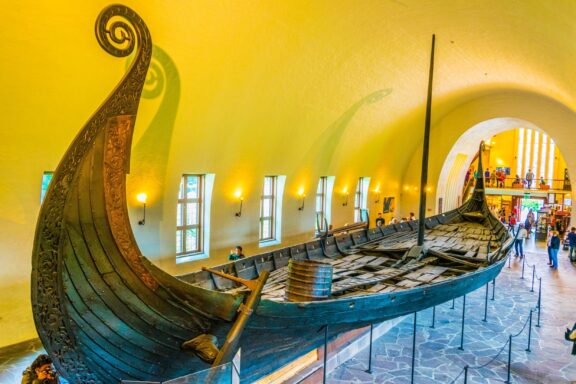
Located on the Bygdøy Peninsula, the Viking Ship Museum is one of Oslo’s most popular attractions. It showcases the world’s best-preserved Viking ships, dating back to the 9th century. The museum’s primary exhibits are the Oseberg, Gokstad, and Tune ships, discovered in royal burial mounds in the Oslo fjord region.
The Oseberg ship is particularly notable for its intricate wood carvings. In addition to the ships, the museum houses a collection of Viking Age artifacts such as sleds, beds, a horse cart, wood carvings, and tent components. Visiting the museum offers a unique opportunity to step back in time and learn about the fascinating era of the Vikings.
2. Akershus Fortress
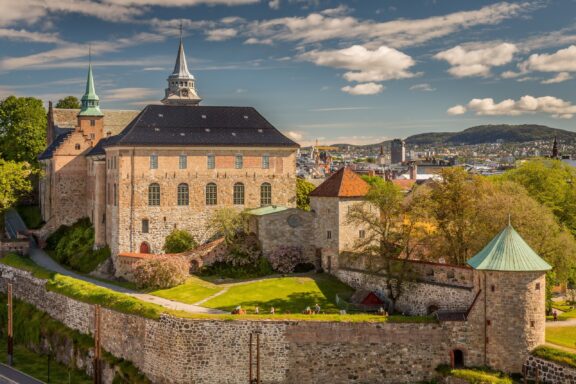
The Akershus Fortress, or Akershus Festning, is a medieval castle built to protect Oslo. It has survived all sieges throughout the centuries, primarily by Swedish forces. The fortress has also served as a royal residence and a prison in its long history.
Today, it houses the Ministry of Defence and offers a great view of the Oslo fjord. Walking around the fortress and the surrounding parkland is like a journey into the past. Inside the fortress, you’ll find the Norwegian Armed Forces Museum and the Resistance Museum, which provides insight into Norway’s history during World War II.
3. Munch Museum
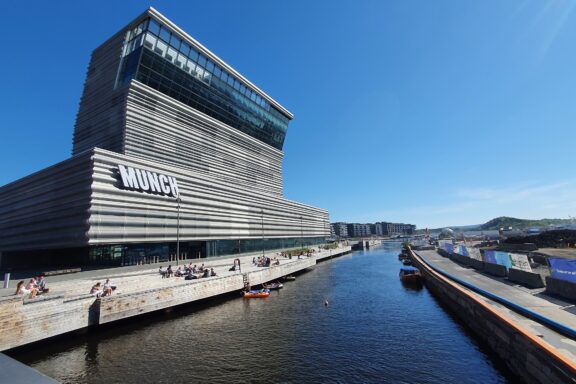
The Munch Museum is dedicated to the life and work of Norwegian artist Edvard Munch, who bequeathed all his works to the city of Oslo upon his death. The museum holds over half of Munch’s paintings, including famous pieces like “The Scream” and “Madonna.”
The collection also includes sculptures, graphic art, drawings, watercolors, and the artist’s personal effects and tools. The museum displays Munch’s artwork and hosts exhibitions about his work and influence. Through its collection, the museum gives visitors a comprehensive understanding of the breadth and significance of Munch’s artistry.
4. The Norwegian Museum of Cultural History
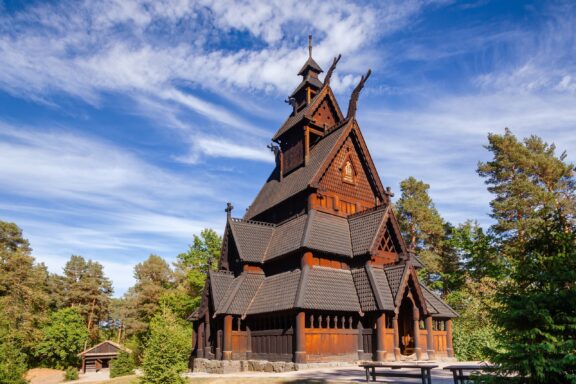
Also located on the Bygdøy Peninsula, the Norwegian Museum of Cultural History, or Norsk Folkemuseum, provides a rich insight into Norwegian history. The museum is particularly famous for its open-air section, which features 160 historical buildings around Norway, including a Stave Church from the year 1200.
A walk through the museum depicts Norwegian life from the Middle Ages to the present day. In addition to the outdoor exhibits, the museum houses extensive collections of artifacts, folk costumes, traditional textile works, and Sami culture.
5. Frognerparken
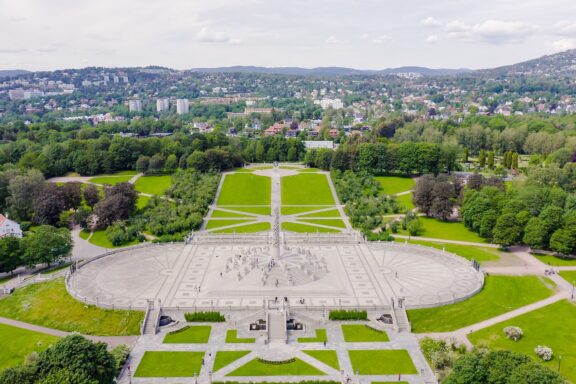
Frogner Park, also known as Vigeland Park, is one of Norway’s most visited attractions. It’s not just a park but also an open-air museum showcasing the works of sculptor Gustav Vigeland. The park features over 200 sculptures created by Vigeland, all made in bronze, granite, and wrought iron.
The sculptures are arranged in an 850-meter-long axis divided into various sections, including the Bridge, the Fountain, and the Monolith, each telling its own story. Besides the unique sculptures, the park offers beautifully landscaped areas perfect for picnics, walks, or simply relaxing.
6. Sognsvann Lake
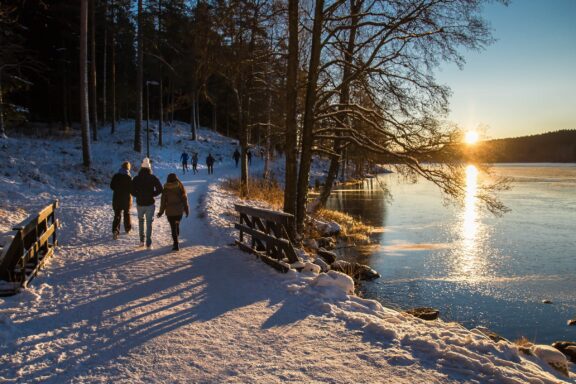
Just a short trip from the city center, Sognsvann Lake is a favorite local spot for outdoor activities. During the summer, it’s perfect for picnics, swimming, and hiking along the trails around the lake.
In the winter, the lake often freezes over, and the surrounding parkland becomes a popular location for cross-country skiing. The area is easily accessible, making it a great place for family outings. It also provides a stunning natural backdrop for photographers.
7. Royal Palace
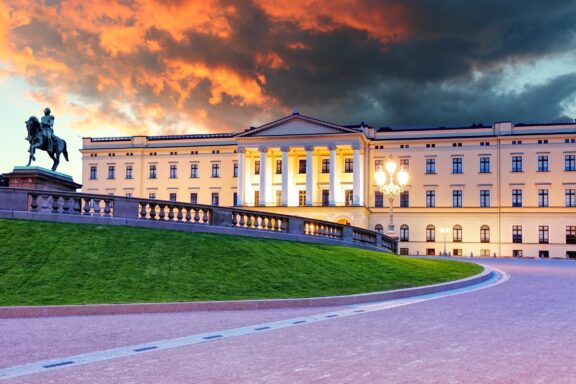
Located at the end of Karl Johans Gate, Oslo’s main street, the Royal Palace is a monument to Norwegian history and monarchy. Built-in the first half of the 19th century as the Norwegian residence of King Charles III, who also reigned as Swedish king Carl Johan, it is where the current Norwegian monarch officially resides.
The palace is surrounded by a beautiful park featuring statues, ponds, and a variety of flora. In the summer, the Royal Palace is open to the public for guided tours where visitors can appreciate its architectural grandeur and historical significance.
8. Ekebergparken Sculpture Park
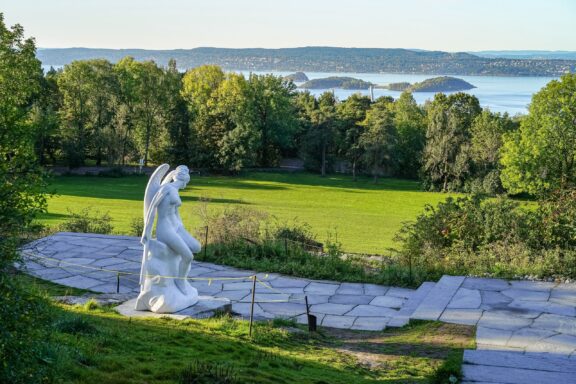
Ekebergparken is a sculpture and national heritage park that offers a unique combination of nature, culture, and history. The park features a wide range of classical to contemporary sculptures by Norwegian and international artists.
As you stroll through the park, you’ll enjoy the artwork and fantastic views of Oslo and the fjord. The park also houses a beautiful restaurant in a restored 1929 functionalist-style building.
9. TusenFryd Amusement Park
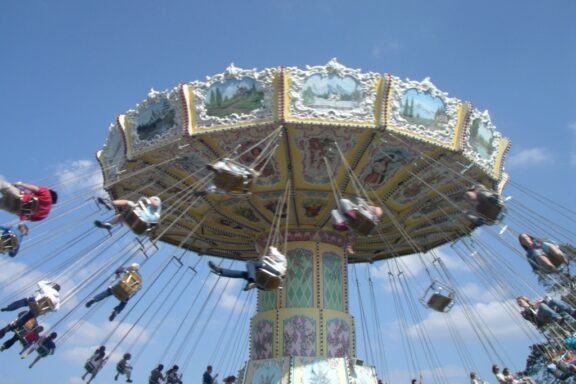
Tusenfryd is an amusement park located in Vinterbro, just outside of Oslo. The park opened in 1988 and has since become a popular destination for locals and tourists. The park features live shows, performances, and entertainment throughout the day. Visitors can enjoy theatrical performances, music shows, and street performances by talented artists.
Tusenfryd is known for its thrilling rides, including roller coasters and adrenaline-pumping attractions. Some of the notable rides include Speed Monster, ThunderCoaster, and SpinSpider. In addition to the thrill rides, Tusenfryd offers a variety of family-friendly attractions suitable for younger visitors. These include carousels, water rides, and interactive play areas.
10. The Fram Museum
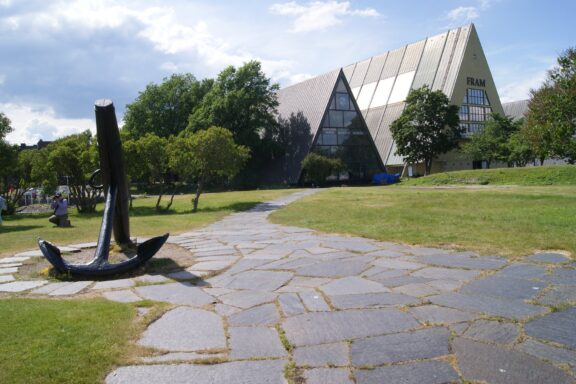
Also known as the Frammuseet, this museum is located on the peninsula of Bygdøy in Oslo, Norway. The museum is centered around the original exploration vessel Fram, an Arctic and Antarctic ship that sailed farther north and south than any other wooden ship.
The museum provides a wealth of information about polar exploration, and you can go on board the ship to see how the explorers lived and survived in the extreme opposite conditions.
11. Nobel Peace Center
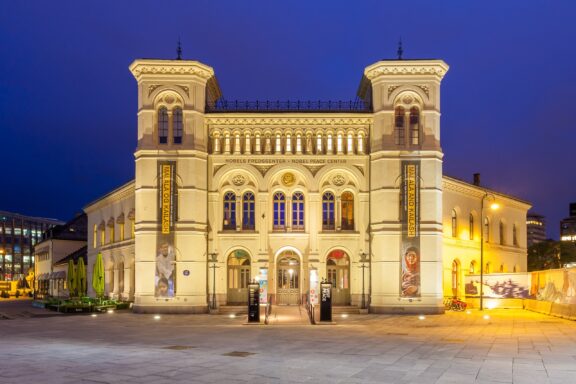
This is a showcase for the Nobel Peace Prize and the ideals it represents. The Center is also an arena where culture and politics merge to promote involvement, debate, and reflection around war, peace, and conflict resolution.
The exhibitions are innovative and interactive, providing a unique experience to visitors. It is situated in a former railway station building next to the Oslo city hall, where the Nobel Peace Prize ceremony is held every December.
12. Mathallen Oslo
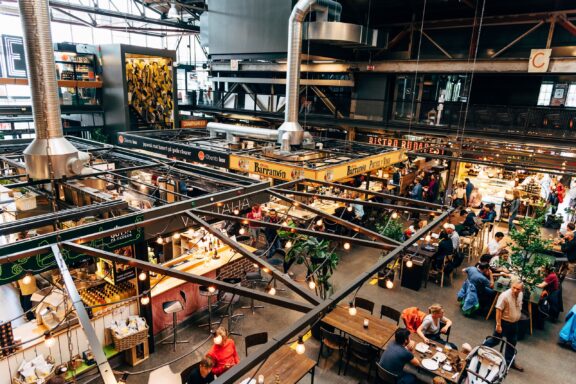
This is a food lover’s paradise. Located in the Vulkan area of Oslo, this large indoor food market brings together a variety of vendors selling everything from fresh produce to gourmet cheese, cured meats, locally brewed beer, high-quality coffee, and more.
There are also several eateries where you can sample delicious food from various cuisines. Mathallen is more than just a place to shop for groceries — it’s also a venue for cooking classes, demonstrations, and other food-related events. It is a vibrant hub that celebrates Norwegian and international food traditions.
13. Explore the Opera House
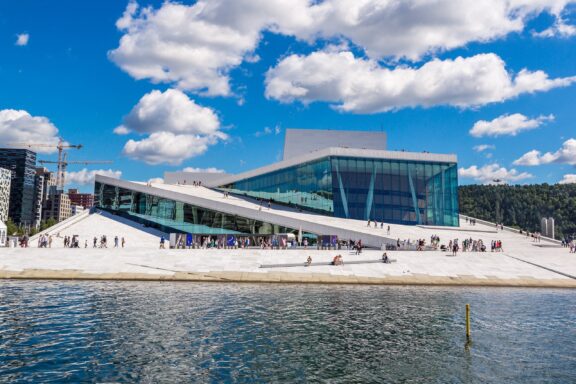
The Opera House is located on the waterfront of the Oslo Fjord, making it a prominent and visually appealing landmark in the city. Its location connects the urban environment and the natural landscape seamlessly.
The Oslo Opera House is designed with a strong focus on sustainability. It incorporates several environmentally friendly features, including the use of renewable energy sources, energy-efficient systems, and a comprehensive waste management system.
The main auditorium of the Opera House is renowned for its exceptional acoustics. It is designed to provide optimal sound quality and enhance the audience’s experience, ensuring that performances are heard with clarity and richness.
14. Holmenkollen Ski Museum and Tower
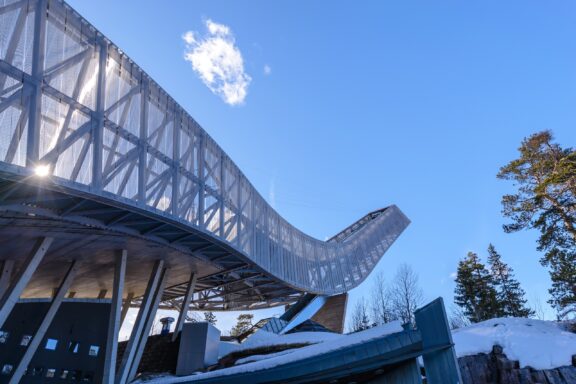
The Holmenkollen Ski Museum and Tower is a must-visit for sports and history enthusiasts. The museum is at the base of the ski jump and covers over 4,000 years of skiing history and polar exploration artifacts.
A trip up to the top of the tower offers panoramic views of Oslo and the surrounding landscape. In winter, the area around Holmenkollen is perfect for skiing, and in summer, it’s popular for hiking and picnics.
15. Vigeland Sculpture Park
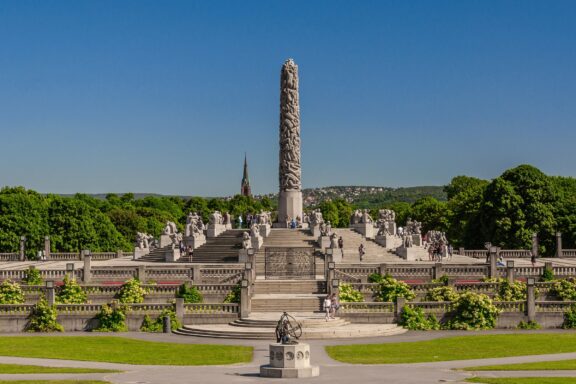
This is the world’s largest sculpture park made by a single artist, Gustav Vigeland. The park features over 200 bronze, granite, and wrought iron sculptures. Vigeland was also in charge of the design and architectural layout of the park, which extends over 80 acres.
The park’s most popular attraction is The Monolith (“Monolitten”), a massive column measuring over 14 meters high carved out of a single granite block, featuring 121 human figures.
Frequently Asked Questions
What is the best time to visit Oslo?
The best time to visit Oslo depends on what you want to do. The summer months (June to August) are ideal for sightseeing and warm weather. The winter months (December to February) are best for skiing and winter sports.
How safe is Oslo for tourists?
Oslo is considered very safe for tourists and the safest city in Norway. However, like in any major city, petty crimes like pickpocketing can occur, so it’s always important to be aware of your belongings, especially in crowded areas.
What currency is used in Oslo?
The currency used in Oslo is the Norwegian Krone (NOK).
What is the food like in Oslo?
Norwegian cuisine is traditionally based on readily available local ingredients. Seafood is a big part of the diet, and dishes like
• Rakfisk (fermented fish)
• Klippfisk (dried and salted cod) are popular.
Game meats, particularly reindeer and elk, feature prominently. Root vegetables, berries, and dairy products are key elements of traditional cuisine.
What is a must-try dish in Oslo?
Rakfisk, a fermented trout dish, is a culinary experience unique to Norway. You could try Kjøttkaker, Norwegian meatballs, usually served with potatoes and peas, for a more universally palatable dish.
What is the best way to get around in Oslo?
Oslo has an extensive public transportation network, including buses, trams, ferries, and a metro system. The city center is also quite walkable.
Can you see the Northern Lights in Oslo?
Seeing the Northern Lights in Oslo is possible but rare. The lights are more frequently seen in the northern parts of Norway.
What is there to do in Oslo for free?
Many parks, including Vigeland Park, are free to visit. You can also see the Opera House’s exterior and roof or walk along the harbor promenade. Many museums also offer free admission on certain days or times.
How expensive is Oslo?
Oslo is often considered one of the more expensive cities in the world, especially for dining and accommodation. However, there are ways to keep costs down, such as using public transport and enjoying the city’s many outdoor activities.
Final Thoughts
With its harmonious blend of natural beauty and urban charm, Oslo is undeniably a destination worth visiting. As the capital of Norway, it offers rich historical context, compelling cultural experiences, and a variety of activities to satisfy any traveler’s preferences.
Whether you’re exploring world-class museums, strolling through stunning parks, or venturing just outside the city for outdoor pursuits, an appealing serenity flows through the city’s lively cosmopolitan atmosphere.
Oslo may be one of the more expensive cities in the world, but its unique experiences, coupled with its people’s friendliness and high standard of living, make it a rewarding destination. So yes, Oslo is worth a visit for an enriching, diverse, and unforgettable travel experience.
Image Sources and Copyright Information
- image-1: © Mappr
- Red Pin on Oslo Map Location: © JoaoCachapa/Shutterstock
- Old Aker Church Surrounded by Snow-Covered Graves: © Mikhail Markovskiy/Shutterstock
- Cobblestone Street with Traditional Houses: © Anna Levan/Shutterstock
- Exterior View of Oslo Stock Exchange Building: © Adrian Chandler/Shutterstock
- Oslo City Hall and Waterfront: © Nanisimova/Shutterstock
- Oslo Skyline at Sunset: © William Perugini/Shutterstock
- Aerial View of Oslo Cityscape and Fjord: © photovideoworld/Shutterstock
- Crowded Pedestrian Street in Urban Setting: © Cloudy Design/Shutterstock
- Modern Architecture in Oslo Cityscape: © Nenad Nedomacki/Shutterstock
- Viking Ship Display at Museum: © trabantos/Shutterstock
- Akershus Fortress in Oslo, Norway: © Paulo Miguel Costa/Shutterstock
- Modern Museum Building by the Waterfront: © Danne_l/Shutterstock
- Traditional Norwegian Stave Church Surrounded by Trees: © Dmitry Naumov/Shutterstock
- Aerial View of Frogner Park in Oslo: © Maykova Galina/Shutterstock
- Winter Walk by a Frozen Lake at Sunset: © Hans-Even Bakken/Shutterstock
- Oslo Royal Palace at Sunset: © TTstudio/Shutterstock
- Sculpture Overlooking Water in Ekebergparken: © Editos foto/Shutterstock
- Swing Carousel Ride in Motion Against Blue Sky: © Kristin Breivik/Flickr
- Fram Museum Exterior with Anchor Display: © hello!15/Flickr
- Nobel Peace Center Building at Dusk: © Nickolay Stanev/Shutterstock
- Indoor Market Hall Bustling with People: © JJFarq/Shutterstock
- Oslo Opera House on a Sunny Day: © Sergii Figurnyi/Shutterstock
- Ski Jump Ramp at Holmenkollen under Blue Sky: © Noppasin Wongchum/Shutterstock
- Vigeland Sculpture Park Monolith and Statues under Blue Sky: © Andrey Shcherbukhin/Shutterstock